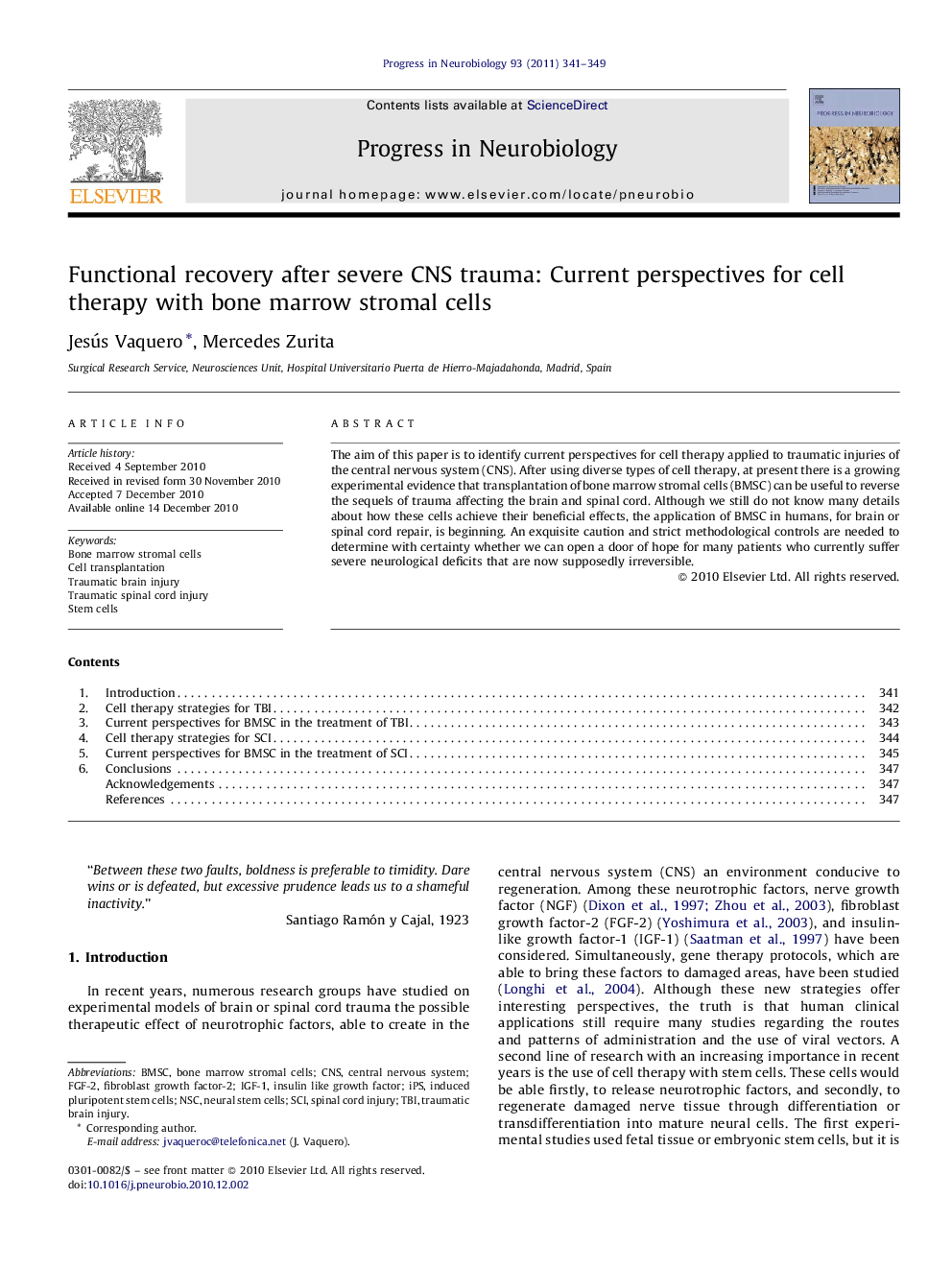| Article ID | Journal | Published Year | Pages | File Type |
|---|---|---|---|---|
| 4353684 | Progress in Neurobiology | 2011 | 9 Pages |
The aim of this paper is to identify current perspectives for cell therapy applied to traumatic injuries of the central nervous system (CNS). After using diverse types of cell therapy, at present there is a growing experimental evidence that transplantation of bone marrow stromal cells (BMSC) can be useful to reverse the sequels of trauma affecting the brain and spinal cord. Although we still do not know many details about how these cells achieve their beneficial effects, the application of BMSC in humans, for brain or spinal cord repair, is beginning. An exquisite caution and strict methodological controls are needed to determine with certainty whether we can open a door of hope for many patients who currently suffer severe neurological deficits that are now supposedly irreversible.
Research highlights▶ We demonstrated the usefulness of cell therapy using bone marrow stromal cells (BMSC) to treat functional deficits after severe brain trauma. ▶ We first demonstrated the utility of BMSC transplantation in chronically established paraplegia. ▶ The usefulness of this type of cell therapy has been confirmed by us using the first model in the literature of adult pigs suffering chronic paraplegia. ▶ We have recently demonstrated the usefulness of plasma-derived scaffolds to support BMSC.
